Tomás Dolz de Espejo
Tomás Dolz de Espejo Andreu Muñoz Serrano y Duforq-Salinis, 5th Count of La Florida (1879-1974) was a Spanish politician and businessman. For some 30 years he campaigned within Traditionalism and Carlism. Periodically he was holding regional party leadership jobs, though nationwide he remained rather in the back row. He is best known as member of the first Junta Política and Consejo Nacional, executive bodies of the newly created Francoist state party, Falange Española Tradicionalista.
Tomás Dolz de Espejo | |
|---|---|
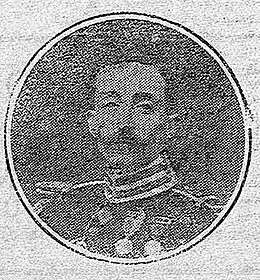 | |
| Born | Tomás Dolz de Espejo 1879 |
| Died | 1974 |
| Nationality | Spanish |
| Occupation | landowner |
| Known for | politician |
| Political party | Carlism, FET |
Family and youth
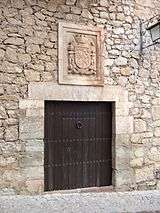
The Dolz lineage is related to Southern Aragón; its first representatives were noted in the late 12th century, once the successful Reconquista claimed Teruel.[1] The family was initially linked to Albarracín,[2] over time spreading to neighboring counties.[3] The Espejo lineage originated from Northern parts of Kingdom of Valencia, resident in Castelfabib.[4] The two families intermarried in the early 17th century, giving rise to the Dolz de Espejo branch.[5] Many of its members made their names in history of Spain; Tomás’ great-grandfather, Pedro Federico Dolz de Espejo, was awarded the title of Conde de la Florida in 1789.[6]
His son, the 2nd Count and the grandfather of Tomás, Pedro Pablo Dolz de Espejo,[7] distinguished himself during the Napoleonic era. At the outbreak of the First Carlist War in 1833 he sided with the legitimists; following defeat he went into exile and died in 1842 in Bordeaux.[8] His son and Tomás’ father, Pedro Manuel Dolz de Espejo (1820-1879), as 3rd Count returned[9] to Spain re-assuming family landholdings in Teruel.[10] He joined the Carlist conspiracy too,[11] during Third Carlist War entrusted with economic issues; it was his signature present on banknotes, issued by the Carlists.[12] He too went into exile, settling in Bayonne. He married[13] a girl from another aristocratic Aragón family, María Andreu y Duforq-Salinis[14] (1843[15]-1920[16]).
Between 1876 and 1879 the couple had 3 children;[17] Tomás was born in France[18] as the younger of two sons.[19] It is not clear when the widow and half-orphans returned to Spain;[20] she is first noted back in the family palace in Teruel[21] in 1888.[22] None of the sources consulted provides information on early years of Tomás, except that he was brought up in "escuela de la lealtad y sacrificio". It is neither clear where he received his education; because he was later referred to as "engineer" he probably studied technology,[23] possibly in Madrid.[24] At unspecified time in the 1900s he engaged in construction; in 1911 he was noted as manager of a Madrid-based company, La Constructora.[25] In 1912 he was referred to as "propietario";[26] he took over the family business in 1913, following premature and childless death of his older brother, the 4th Count;[27] he also inherited the title.[28]
In 1912[29] Tomás Dolz married María de la Estrella González de la Riva Vidiella (1882[30]-1989[31]), daughter to teniente coronel de artillería 9th Marques de Villa Alcázar.[32] The couple settled in Madrid at Conde Aranda;[33] they had 3 children, born between 1913 and 1914. None of them became a public figure, though the only son, Carlos Dolz de Espejo y González de la Riva (1913-2013), an air force general,[34] briefly gained media attention in relation to the most famous Spanish UFO incident of 1976.[35] A younger daughter, María,[36] married Antonio Galbis Loriga, Conde de Morphy, general de artillería and ayudante honoríficio to Franco.[37] Among numerous grandchildren of Tomás and María, the best known ones are Carlos Dolz de Espejo y Arrospide, businessman and the 7th Conde de la Florida,[38] and Alfonso Galbis Dolz de Espejo, a painter.[39]
Early political career (until 1919)
With two generations of ancestors serving the legitimist cause Dolz seemed poised to follow suit, especially that also his mother came from a Traditionalist family.[40] However, during his youth Traditionalism was divided into mainstream Carlists and the breakaway Integrists. His brother, only 2 years senior, sided with the rebels; as a 16-year-old in 1893 he publicly voiced support for the Nocedalistas.[41] In course of the 1890s Pedro Dolz de Espejo grew in the Integrist structures,[42] in 1900 rising to president of the Valencian Junta Provincial[43] and in 1907 entering the executive of Valencian Junta Regional.[44] However, none of the sources consulted confirms (or denies) that Tomás followed his older brother; until the early 1910s he is not recorded as engaged in politics.
Dolz was first noted in political milieu[45] in 1911; he demonstrated support to Traditionalist deputies from both the Integrist and Jaimist minorities, who in the Cortes in vain tried to block Ley del Candado.[46] In 1912 he was admitted to Real Maestranza de Caballeria de Zaragoza, a theoretically non-political but in fact highly conservative aristocratic organization.[47] Following death of his older brother he became a somewhat prestigious figure in the Teruel realm and as such decided to join the electoral race: in 1914 he ran to the Cortes from Mora de Rubielos, a district in the Teruel province; it was also the first time he declared himself a Jaimista, member of Carlist branch supporting the claim of Don Jaime.[48] The attempt proved premature and he lost pathetically, gaining 10 times fewer votes than a victorious candidate.[49] Following the defeat Florida is never confirmed to have renewed his bid for the parliament.
In the mid-1910s Florida, already referred to in the press as "rico propietario", was already fully engaged in the Jaimista structures. In 1915 he was rumored to be running in the Cortes elections of the following year from the Madrid Latina district;[50] the news eventually proved false, though in 1916 he was busy mounting an electoral alliance which would include even the Traditionalist arch-enemies, the Liberals.[51] In 1917 he worked to seal an electoral union of the Jaimists, the Integrists, the Maurists and independent candidates, to be fielded in the forthcoming electoral campaign.[52] He rose to first secretary of the Madrid municipal Jaimist organization,[53] in 1918 growing to its jefe[54] and soon also jefe of the provincial Madrid structures,[55] though in general remained a back-row party figure.[56]
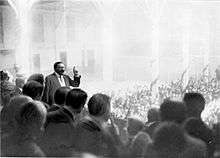
Though he seemed perfectly loyal to Don Jaime,[57] in the new internal conflict within Carlism Florida tended rather to side with its key theorist, Juan Vázquez de Mella. This was demonstrated not only by Mellista-typical penchant for right-wing alliances,[58] but also by advocating neutralist stand in the Great War, a strategy intended to counter pro-Entente feelings and effectively supporting the Central Powers.[59] Florida was not among chief protagonists of the strife and remained in the background; however, when in 1919 Vázquez de Mella broke away and set up his own party, Dolz de Espejo decided to join him.
Rebellious Mellista and reconciled Carlista (1919-1936)
In 1920 Florida joined a 3-member Mellista Castilla La Nueva executive;[60] in 1921 he assumed the position of Jefe Provincial in Madrid[61] and honorary president of the Madrid branch of the party youth, Juventud Católica Tradicionalista.[62] Reported as engaged in a variety of initiatives – setting up new cinemas in Madrid,[63] collecting money for religious purposes,[64] donating and organizing donations to army operations in Morocco,[65] taking part in Catholic ceremonies,[66] supporting sports[67]- he was not, however, noted as busy building the party structures.[68] In 1922 he attended a general Mellista assembly, taking place in Zaragoza and supposed to finalize buildup of the new party.[69] The assembly launched Comité Directivo of the newly formed Partido Tradicionalista;[70] Florida was one of its 3 members.[71] He was also confirmed as the Madrid Jefe Provincial, temporarily given command of "provincias del Centro, Sur y Oeste de España".[72] The Mellista project hardly took off the ground when the 1923 coup of Miguel Primo de Rivera banned all political parties in the country.
Florida withdrew to privacy, in public noted for charity[73] and glamour of aristocratic societé.[74] Resident of Madrid, he was spending strings at his La Florida property[75] in Teruel[76] and in estates in Valencia. Fascinated by cars he managed a Sitges circuit,[77] excelled in Real Automovil Club[78] and co-ran a tourist review;[79] owner of a new Buick,[80] he was fined for excessive driving[81] until his car was stolen.[82] Excluding landholding properties, he lived off a number of enterprises; apart from construction company he was president of Sociedad Española de Talcos[83] and Compañia de Seguros Omnia.[84] During Dictablanda Dolz renewed political endeavors. In May 1930 he was received by Alfonso XIII.[85] Against the rising Republican tide he stood on monarchist ground, cultivating old-style patriotism.[86] Having joined Unión Monárquica Nacional, in April 1931 he ran on its ticket in elections for the Madrid ayuntamiento.[87]

Upon declaration of the Republic Florida tried to transfer his capital abroad.[88] Apprehended by the customs service he was detained and possibly suffered forfeiture of some of the assets smuggled.[89] At unspecified time he returned to Carlist loyalty by entering Comunión Tradicionalista, which in 1932 re-joined the former Jaimistas, Integristas and Mellistas. In 1933 he was appointed its Jefe Regional of Castilla La Nueva.[90] Despite holding a theoretically prestigious position, Florida did not seem particularly active; he was seldom recorded as speaking at party meetings[91] and historians almost do not mention his name when discussing Carlist activities during the Republic.[92] It is not clear what his position was on controversial question of alliances with other monarchist and Right-wing groupings or on internal leadership rivalry between Conde de Rodezno and Manuel Fal. In 1935 the latter triggered his nomination to Junta de Hacienda,[93] a body entrusted with organizing funds for the Comunión.
Towards political climax (1936-1937)
_-_Fondo_Mar%C3%ADn-Kutxa_Fototeka.jpg)
It is not clear whether Florida was engaged in Carlist preparations to the July 1936 coup.[94] Some sources clam that in mid-September 1936 he was nominated the Carlist comisario de guerra for the region of León;[95] in September he emerged in Ciudad Rodrigo, busy organizing Requeté;[96] in October his León efforts gained him a letter of thanks from the new Carlist regent, Don Javier.[97] Though he is not listed as member of the national Carlist wartime executive, Junta Nacional Carlista de Guerra,[98] residing in Salamanca he started to take part in meetings of the Comunión leaders. For reasons which are not entirely clear his position grew; perhaps as a host Florida presided over a Carlist emergency meeting of December 1936, called to deal with Franco's demand that Fal Conde leaves Spain.[99] It is not clear what position he took; some historians discussing the day refer to him as "Rodezno’s ally", which suggests that Florida proposed that the ultimatum be accepted.[100]
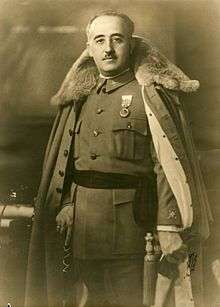
Starting early 1937 the Carlists were facing a prospect of forced amalgamation into a state party; the claimant and the Falcondistas opted for intransigence, Rodezno and the Navarrese opted for negotiations. Florida was present at a February meeting in Insua and sided with the Rodeznistas,[101] position maintained also in March.[102] In early April he took part in a meeting of a somewhat rebellious Navarrese Junta Central; it adopted a Franco-addressed proposal suggesting a directorio, composed of Carlists, Falangists and caudillo's appointees.[103] In mid-April he was one of 4 Carlists summoned to Burgos; generalísimo informed them about forthcoming political unification.[104] It is not clear why he was picked up by Franco; some suggest that Florida was among most "conspicuous" Carlists because of his Requeté recruitment activities.[105]
At that time Franco and his aides were already considering personal composition of executive of the state party just to be announced. Florida was not among the Carlists initially marked; presented by Franco with shortlisted candidates,[106] Rodezno suggested that Marcelino Ulibarri is dropped and one more seat is reserved for the Carlists, coming with the names of Florida and José María Mazón.[107] The proposal was accepted and on 22 April Dolz found himself among 4 Carlists nominated to a 10-member[108] "Secretariado o Junta Política"[109] of Falange Española Tradicionalista.[110] Of all its members he was perhaps the least-known one; among press-published short notes about the appointees, his was the shortest one.[111] Terms of unification greatly disappointed many Carlists, including some of the Junta appointees;[112] the regent was furious. In June the Carlist junteros asked him to authorize their presence in the Junta, but to no avail;[113] later on all were expulsed from Comunión for breach of loyalty.[114]
Executive or figurehead (1937-1939)
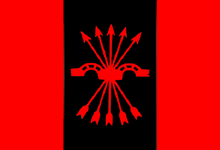
Frustrated by lack of the Falangist give and take in the Junta, some Carlists complained to Franco; the result were October 1937 nominations to another party body, a 50-member Consejo Nacional.[115] Florida found himself among 12 Carlist nominees[116] and was already firmly mounted among highest-positioned civilians of the Francoist Spain, sitting in two bodies directing the only political organization allowed in the state.[117] However, many historians agree that both executive structures were rather decorative and that the entire party was at that stage a nascent structure, called into being to ensure that power stays with Franco and yet to acquire its later dynamics.[118] Moreover, the Carlists were enraged to find that what they supposed to be an organization they could control or at least influence was increasingly turning into a new version of Falange, with syndicalist blue-shirts systematically gaining the upper hand. Following unification Carlist rank-and-file started to bombard their leaders in Junta and in Consejo with complaints about getting sidetracked, asking for support. As recipient of these notes and phone calls Florida is recorded as pledging support; it is not clear whether he indeed intervened, though it is clear that nothing changed.[119]
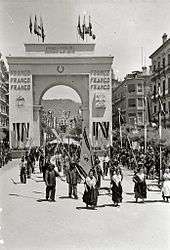
Throughout most of the Civil War in public Florida maintained a loyal Francoist stand.[120] In newspapers he was quoted arguing in favor of the unification; according to him both Carlism and Falange were anti-democratic, anti-Liberal, anti-parliamentarian and Catholic, he claimed also that both supported monarchist solution, to be implemented in the future.[121] Apparently he also tried to cultivate the Traditionalist format as much as he could, with some other FET executives attending sermons honoring Carlist kings Carlos VII[122] and Alfonso Carlos[123] or taking part in annual Carlist feast dedicated to Mártires de la Tradición, initially observed by the state party. On the other hand, he did not refrain from attending new-style events, like banquets in the Nazi headquarters in Salamanca.[124] In 1938 he acted as FET Jefe Provincial in Salamanca,[125] typically one of the 3 most important civilian positions in every province;[126] it is not clear what exact dates of his term were.
Florida's career at the top of the Francoist political strata came to the end in late summer of 1939. As late as in August he was still reported taking part in public events as consejero nacional,[127] but this changed in September; he did not find himself among appointees to the II Consejo Nacional and starting 1940 he was reported in the press simply as "Conde de la Florida".[128] None of the sources consulted offers any insight into his departure from the party executive, and specifically whether it was a fall from grace or a conscious decision to withdraw. It could have been resignation following disappointment with the syndicalist format of the new party; it could have been marginalization suffered as a result of an internal conflict, as it happened with Joaquín Bau, another Carlist sidetracked by Ramón Serrano Suñer,[129] especially that Florida publicly kept declaring inevitable restoration of the monarchy.[130]
Political retirement and long senility (after 1939)
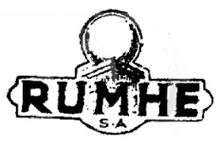
No longer in the top political flight, in the early 1940s Florida was still present in public life, e.g. taking part in Traditionalism-flavored feasts attended by some FET heavyweights.[131] In 1942 he was not appointed to the III Consejo Nacional[132] and his political career seemed definitely over. This might not have been exactly the case, as in 1944 he was reported among governmental officials, namely noted as subsecretario de industria.[133] This was, however, definitely the last of his Francoist episodes; afterwards he was no longer mentioned related either to the party or to the government. He did not accept an olive branch from Carlism; in 1942 Fal declared that all those stained by Falangism might be re-admitted given they abandon their state party links; the offer explicitly excluded from the scheme some of the leaders, but Florida was not among them.[134] In the late 1940s he ventured to publicly demonstrate support for Ricardo Oreja, his old-time fellow Mellista, when the latter succeeded in Madrid municipal elections.[135]
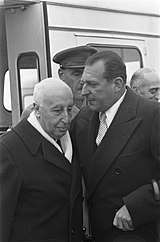
Though already at the retirement age, Florida remained active in a number of enterprises, mostly related to mineral resources and dependent businesses, like construction or pharmaceuticals; some of them, like RUMHE,[136] landed hefty contracts in prestigious locations, like the Madrid Gran Vía.[137] In the 1950s he regularly featured in societé columns, attending aristocratic feasts related and unrelated to his own family. His political engagements were almost inexistent, except that he kept attending the Mártires de la Tradición sermons.[138] This changed abruptly in the mid-1950s. In 1956 Florida was awarded Gran Cruz del Mérito Civil, a very prestigious Francoist honor.[139] In 1957 he was among 70-odd Carlists who concluded their longtime rapprochement with the Alfonsist claimant, Don Juan. Satisfied that formal acceptance of Traditionalist principles rendered him fit for succession also from the Carlist perspective, they declared him the legitimate heir to the throne.[140] Florida, one of the most distinguished of the so-called "Estorilos", entered the claimant's Consejo Privado, the post retained until the end of his life.[141]
Also as an octogenarian Florida kept attending social events, at times assuming unlikely roles; in 1962 he formed part of a jury at a female beauty contest.[142] He remained engaged in religious activities, in particular in ranks of Hermandad de Caballeros de San Juan Bautista y Nuestra Señora de las Mercedes;[143] occasionally he presided over charity initiatives.[144] Cautiously he kept admitting Traditionalist heritage; apart from cultural events like those dedicated to memory of Vázquez de Mella[145] in the late 1960s he engaged in Hermandad de Cristo Rey de Requetés ex Combatientes, formally an organisation of Carlist Civil War combatants though in practice a Traditionalist bulwark in internal Carlist strife, aimed against a newly emergent progressist faction;[146] nothing indicates he was aware of the background and historians extensively discussing internal fragmentation of Carlism in the 1960s and 1970s do not mention his name.[147] Also in the late 1960s he kept cultivating the Juanista link;[148] in the 1970s he was noted only as attending weddings of his grandchildren.[149]
Footnotes
- Rocio Castellote Simón, El retablo de la Virgen del Pilar de la iglesia de San Bernardo abad de Gea de Albarracín, Valencia 2016, p. 18
- Tomás Alamán Artigot, Gea en el tiempo, [in:] GeaDeAlbarracín service, available here
- more details are scattered across different volumes of Linajes de Aragón. Revista quincenal ilustrada, see for instance Gregorio García Ciprés, Los Sánchez-Muñoz de Teruel, [in:] Linajes de Aragón 01.05.12, pp. 137-141
- Manuel Fuertes de Gilbert Rojo, Albarracin: linajes y testimonios heraldicos, [in:] José Antonio Salas Ausens (ed.), Tiempo de Derecho foral en el sur aragonés: los fueros de Teruel y Albarracín, Zaragoza 2007, ISBN 9788489510814, pp. 55-106
- Castellote Simón 2016, p. 18
- detailed discussion in Fuertes de Gilbert Rojo 2007, pp. 55-106
- some services confuse different members of the family, compare Pedro Pablo Dolz de Espejo, 2. conde de la Florida entry, [in:] Geneallnet service, available here, or Compactgen service, available here. Even the canonical lecture of Traditionalist history confuses the family members; Ferrer refers to "Pedro Manuel Dolz de Espejo y Martinez Serrano", who allegedly died 1882 in Madrid, Melchor Ferrer, Historia del tradicionalismo español, vol. 28/2, Sevilla 1959. p. 260
- La Unión Católica 09.01.80, available here
- born in 1820 he left Spain as a teenager, accompanying his father into exile
- La Unión Católica 09.01.80
- in 1869 he was appointed comisario regio for Maestrazgo - Melchor Ferrer, Historia del tradicionalismo español, vol. 23, Sevilla 1955, p. 31 and comisario for Valencia - Jordi Canal, El carlismo, Madrid 2000, ISBN 8420639478, p. 159; in 1870 he became member of the claimant’s consejo provisional - Ferrer 1955, p. 120; in 1872 he was nominated to claimant’s Real Junta – Melchor Ferrer, Historia del tradicionalismo español, vol. 24, Sevilla 1955, p. 22
- ABC 21.02.59, available here
- in 1876; it is not clear whether the wedding took place in Spain or – which is more likely - already on exile
- see María del Carmen Andreu y Dufourg-Salinis entry, [in:] Geneallnet service, available here
- Roberto Moreno y Mórrison, Continuación de los Titulos del Reino, [in:] Revista de Historia y Genealogía Española 10-11 (1928), p. 885, available here
- El Debate 10.02.20, available here, El Siglo Futuro 10.02.20, available here
- La Unión Católica 09.01.80
- El Correo Español 23.09.17, available here
- La Unión Católica 09.01.80
- a paternal uncle of Tomás, the younger brother of the late Pedro Manuel, also a Carlist supporter Federico Dolz de Espejo, stayed on exile in Saint-Jean-de-Luz until his death in 1886, Diario de Teruel 12.02.86, available here
- at Calle de los Amantes
- El Correo de Teruel 30.12.88, available here, see also Eco de Teruel 28.05.93, available here
- Santiago Olives Canals, Stephen Taylor, Who's who in Spain, vol. 1, Madrid 1963, p. 260
- in 1902 a certain "Tomas Dolz" is noted as setting up – together with individuals who later became well known - a Madrid football club named The-Sport-Foot-Ball-Club, El Cardo 30.11.02, available here
- Revista Católica de Cuestiones Sociales 201 (1911), p. 193, available here; he was also reported otherwise engaged in construction business, El Correo Español 12.08.12, available here, and Arquitectura 241 (1912), p. 255, available here
- Revista Católica de Cuestiones Sociales 201 (1911)
- Pedro Dolz de Espejo Andreu Muñoz Serrano y Duforq-Salinis (1877-1913); though his father died in 1879, he was formally recognized as the 4th conde in 1903, compare Diario de Teruel 04.01.03, available here
- ABC 19.03.12, available here, El Mercantil 17.01.14, available here; though his brother died in 1913, Tomás Dolz was formally recognized as the 5th count in 1917, Revista de historia y de genealogía española 11 (1916), p. 527, available here
- ABC 19.03.12, available here
- ABC 27.03.89, available here; another source claims her birth date was 1881, Moreno y Mórrison 1928, p. 885
- ABC 27.03.89
- as a teenager she moved with her parents to Madrid. One source claims she was born in Salamanca, see Moreno y Mórrison 1928, p. 885; another one sort of suggests she might have been born in Cádiz, compare Francisco González de la Riva y Vidiella, Marqués de Villa Alcázar, [in:] Ruralmedia service, available here
- they lived at Conde de Aranda 20, Moreno y Mórrison 1928, p. 885
- he rose to segundo jefe of the Air Force general staff, then nominated Jefe de la Zona Aérea de Canarias, BOE 25.05.76, available here, also ABC 25.11.72, available here
- named "ovni de Galdar", compare himself speaking on the event in 1996, YouTube service, available here
- there were two daughters, Carmen (1914-2008) and María (1914-2007), compare ABC 26.01.74, available here, ABC 19.12.07, available here, and ABC 05.10.08, available here
- ABC 15.03.03, available here
- compare Dolz De Espejo Arrospide Carlos entry, [in:] Empresia service, available here
- compare his works, available here
- daughter of marqués de Ballestar, Moreno y Mórrison 1928, p. 885. The Ballestars supported the Carlists since the First Carlist War, Alfonso Bullón de Mendoza Gómez de Valugera, La nobleza carlista, [in:] Nobleza y sociedad en la España moderna 2 (1997), p. 102
- El Siglo Futuro 14.03.93, available here
- El Ancora 25.09.97, available here
- El estandarte católico 14.09.00, available here, La correspondencia de Valencia 16.04.07, available here
- rising to its vice-president, El Siglo Futuro 12.06.06, available here, El Ebro 15.06.07, available here
- apart from non-political incidents, some of them awkward; in 1911 he engaged in a brawl, related to his borrowing and breaking of a camera, compare La Mañana 19.08.11, available here
- El Siglo Futuro 06.01.11, available here
- Anuario de la nobleza de España 1911, p. 587, available here
- Diario de Valencia 04.03.14, available here
- Diario Turolense 13.10.14, available here, El mercantil 09.03.14, available here
- Diario Turolense 07.10.15, available here
- El Cronista de Teruel 21.03.16, available here
- La Cruz 21.11.17, available here
- ABC 06.05.17, available here
- El Correo Español 23.09.17, available here
- El Porvenir 17.05.18, available here
- Florida is not a single time mentioned in an extensive study dealing with Carlist political history of the late 19th and early 20th history, see Agustín Fernández Escudero, El marqués de Cerralbo (1845-1922): biografía politica [PhD thesis], Madrid 2012
- e.g. in 1918 he entertained Infanta Beatriz, sister of the claimant Don Jaime, El Debate 23.06.18, available here
- one scholar defined Mellismo as a political strategy, aiming at building ultra-Right alliances centred around Traditionalism though with dynastic issues sidetracked or even ignored, Juan Ramón de Andrés Martín, El cisma mellista. Historia de una ambición política, Madrid 2000, ISBN 9788487863820
- 1916 co-organized "conferencia neutralista", Heraldo Militar 28.10.16, available here
- El norte 10.06.20, available here
- El Debate 12.07.21, available here
- the president was Martin Asúa, with vice-presidency falling to Ricardo Oreja, La Reconquista 05.11.21, available here
- in 1919, Angel Caldito, Los primeros estudios de cine en Madrid - Atlándita Cinematográfica, [in:] Historias matritenses 04.12.08, available here
- 1920 engaging in erecting of a monument to Virgen del Pilar in Lourdes, La Independencia 10.09.20, available here
- in 1921 he donated 500 ptas to a committee, collecting money with intention to buy an aircraft; named "Teruel", it was to be given to the army to engage in combat in Morocco, La Provincia 11.08.21, available here
- La Correspondencia de España 11.03.22, available here
- El Debate 03.09.23, available here
- Florida is not mentioned a single time in a monographical volume discussing the Mellista breakup, compare Andrés Martín 2000
- El norte 17.10.22, available here
- La Reconquista 04.11.22, available here
- along with Marqués de Valdespina and Teodoro Más, El Debate 21.12.22, available here
- El Norte 07.11.22, available here
- Teruel 07.08.28, available here
- La Cruz 22.04.28, available here
- La Correspondencia de España 29.06.21, available here
- La Provincia 13.08.21, available here
- El Debate 03.09.23, available here
- and probably interfacing with Alfonso XIII, El Debate 24.04.22, available here
- El defensor de Córdoba 16.01.26, available here
- El Iris 14.07.26, available here
- Teruel 23.07.28, available here
- from the street in front of his house, ABC 22.11.29, available here
- ABC 21.05.26, available here
- ABC 29.05.32, available here
- it is not known what was the purpose of the meeting, ABC 09.05.30, available here
- he demanded firm line on dissenting groupings; in 1930 he signed a letter demanding stop to governmental subsidies to Ateneo de Madrid, accused of cultivating anti-patriotic threads, ABC 03.12.30, available here
- result is not known; presumably he lost, El Adelanto 11.03.31, here
- El Telegrama del Rif 04.06.31, available here
- Las Provincias 30.05.31, available here
- Pensamiento Alaves 12.08.33, available here
- though at times he did, compare Tradición 15.01.33, available here
- 1935 he co-founded a company Editorial Católica Gráfica, called up to issue a Madrid Catholic review Esto; it is not clear whether this was part of the Carlist propaganda efforts, La Gaceta de Tenerife 13.02.35, available here
- Melchor Ferrer, Historia del tradicionalismo español vol. 30/2, Sevilla 1979, p. 57, Robert Vallverdú i Martí, El carlisme català durant la Segona República Espanyola 1931-1936, Barcelona 2008, ISBN 9788478260805, p. 276
- Mercedes Peñalba Sotorrío, Entre la boina roja y la camisa azul, Estella 2013, ISBN 9788423533657, p. 18
- El Progreso 29.04.37, available here, Heraldo de Zamora 27.03.37, available here, see also Efemerides carlistas post of 14.09.19 at Agencia Faro FB account, available here
- Miróbriga 20.09.36, available here
- Heraldo de Zamora 14.10.36, available here
- Florida is not listed among members of the Junta and heads of its agencies, compare Ricardo Ollaquindia Aguirre, La Oficina de Prensa y Propaganda Carlista de Pamplona al comienzo de la guerra de 1936, [in:] Príncipe de Viana 56 (1995), pp. 485-6
- Jaime del Burgo Torres, Un episodio poco conocido de la guerra civil española. La Real Academia Militar de Requetés y el destierro de Fal Conde, [in:] Principe de Viana 196 (1992), p. 496
- Martin Blinkhorn, Carlism and Crisis in Spain 1931-1939, Cambridge 2008, ISBN 9780521207294, p. 277
- Robert Vallverdú i Martí, La metamorfosi del carlisme català: del "Déu, Pàtria i Rei" a l'Assamblea de Catalunya (1936-1975), Barcelona 2014, ISBN 9788498837261, p. 46
- in March 1937 Consejo de la Tradicióñ decided to send a delegation to Franco informing him that Junta Nacional resigned and could be re-appointed according to his will; the envoys were Martinez Berasain, Marcelino Ulibarri and José María García Verde, Florida was not mentioned, Peñalba Sotorrío 2013, pp. 42, 126
- the meeting took place on 4 April 1937. The 12-member directorio was to composed of 3 Carlists, 3 Falangists and 6 appointees of Franco, Juan Carlos Peñas Bernaldo de Quirós, El Carlismo, la República y la Guerra Civil (1936-1937). De la conspiración a la unificación, Madrid 1996, ISBN 9788487863523, p. 262. It does not seem that at the time Florida took the unification threat very seriously, as on 8 April 1937 he was appointed president of jury to examine proposals for AET logotypes, Pensamiento Alaves 08.04.37, available here
- apart from Florida, they were Rodezno, Ulíbarri and Martínez Berasain, Peñas Bernaldo 1996, p. 270
- "con cargo preeminente en la dirección del Requeté", Maximiliano García Venero, Historia de la unificación, Madrid 1970, p. 96. This argument does not seem convincing, since the man formally responsible for Requeté, Jose Luis Zamanillo, was actually ignored by the Franco headquarters. As to Rodezno, it seems that he and his entourage considered unification sort of a loose general alliance; he ensured his fellow partymen that unification means monarchy, regionalism and Catholicism. Some scholars are not sure whether Florida took part in the meeting, Blinkhorn 2008, pp. 288, 360
- there were 3 Carlists on the original list of candidates: Conde de Rodezno, Marcelino Ulibarri and Luis Arellano, Peñalba Sotorrío 2013, p. 56
- Peñalba Sotorrío 2013, p. 56
- some scholars say there were 9 members, Blinkhorn 2008, p. 291
- Boletin Oficial de la Provincia de Soría 28.04.37, available here
- Peñalba Sotorrío 2013, p. 53
- El Progreso 29.04.37, available here
- following publication of the Unification Decree some Carlists - Rodezno, Arellano, Ortigosa, Berasain - disgusted with its terms, visited Franco to voice their opinion; Florida was not among them, Peñalba Sotorrío 2013, p. 54
- Manuel Martorell Pérez, La continuidad ideológica del carlismo tras la Guerra Civil [PhD thesis in Historia Contemporanea, Universidad Nacional de Educación a Distancia], Valencia 2009 , p. 45
- some scholars claim they were expulsed on July 18, 1937 - Ana Marín Fidaldo, Manuel M. Burgueño, In memoriam. Manuel J. Fal Conde (1894-1975), Sevilla 1980, p. 45; some claim the correct date is December 3, 1937, Garcia Venero 1970, p. 109
- Boletin Oficial de la Provincia de Soría 26.10.37, available here, César Alcalá, D. Mauricio de Sivatte. Una biografía política (1901-1980), Barcelona 2001, ISBN 8493109797, p. 135
- the nominees were not listed alphabetically, but in a specific order; Florida was among the last Carlists ranked. The sequence was as follows: 2. Rodezno, 6. Bilbao, 8. Muñoz Aguilar, 12. Baleztena, 14. Urraca, 17. Valiente, 23. Fal, 27. Oriol, 29. Mazón, 32. Florida, 47. Arellano, 49. Toledo
- none of the sources consulted provided any insight into a meteoric rise of Florida; from a local Carlist jefe, inactive and with no particular skills demonstrated so far, he turned into one of the highest-positioned civilians in the Francoist state
- compare Stanley G. Payne, Fascism in Spain, Madison 1999, ISBN 9780299165642, especially chapters Francisco Franco and the formation of the Falange Española Tradicionalista, pp. 239-272, and The FET during the Civil War, pp. 273-39
- José Antonio Parejo Fernández, Falangistas y requetés: historia de una absorción violenta, [in:] María Encarna Nicolás Marín, Carmen González Martínez (eds.), Ayeres en discusión: temas clave de Historia Contemporánea, Madrid 2008, ISBN 9788483717721, pp. 12-14, 16
- apparently he remained also on very good terms with the military of the Burgos headquarters, as he was in position to issue recommendations regarding handling of foreign vounteers; it was thanks to his support that in August 1937 colonel Antonio Barroso y Sánchez-Guerra directed a certain Andre Radzivill, referred to as "Principe de Estado de Ucraina (Polonia Rusa)", to enlist to the 6. Navarrese Brigade, Jan Stanisław Ciechanowski, Polscy ochotnicy po stronie narodowej, [in:] Jan Kieniewicz (ed.), Studia polsko-hiszpańskie. Wiek XX, Warszawa 2004, ISBN 8392018028, p. 143
- El Diario Palentino 28.02.38, available here
- Azul 19.11.39, available here
- Heraldo de Zamora 28.09.39, available here
- La Gaceta de Tenerife 30.11.37, available here
- Heraldo de Zamora 28.03.38, available here
- the other two were gobernador civil and alcalde of the province capital, Andreu Ginés i Sànchez, La instauració del franquisme al País Valencià [PhD thesis Universitat Pompeu Fabra], Barcelona 2008, p. 141
- El Progreso 13.07.39, available here
- ABC 12.03.40, available here
- Joaquín Monserrat Cavaller, Joaquín Bau Nolla y la restauración de la Monarquía, Madrid 2001, ISBN 8487863949, p. 184
- El Diario Palentino 28.02.38, available here
- El Progreso 12.03.40, available here
- ABC 24.11.42, available here
- Imperio 27.02.44, available here
- Peñalba Sotorrío 2013, p. 143
- ABC 22.02.49, available here
- RUMHE standing for Riqueza Urbana Madrileña Juan de Herrera, Hoja Oficial de Lunes 14.06.43, available here
- Hoja Oficial de Lunes 15.05.44, available here
- ABC 11.03.56, available here
- ABC 18.07.56, available here
- Alcalá 2001, p. 139, Vallverdu 2014, p. 157, Blinkhorn 2008, p. 302
- ABC 02.04.93, available here
- ABC 25.05.62, available here
- Hoja Oficial de Lunes 16.12.63, available here
- Hoja Oficial de Lunes 10.02.64, available here
- ABC 27.02.58, available here
- ABC 11.06.67, available here
- there are 3 PhD studies dealing with history of Carlism in the Francoist era, but except mentioning the 1957 Estoril episode, none of them mentions Florida, compare Martorell Pérez 2009, Ramón María Rodón Guinjoan, Invierno, primavera y otoño del carlismo (1939-1976) [PhD thesis Universitat Abat Oliba CEU], Barcelona 2015, Francisco Javier Caspistegui Gorasurreta, El naufragio de las ortodoxias. El carlismo, 1962–1977, Pamplona 1997; ISBN 9788431315641
- La Vanguardia 07.05.67, available here
- ABC 07.06.72, available here, ABC 09.10.73, available here, ABC 25.10.73, available here
Further reading
- Maximiliano García Venero, Historia de la unificación, Madrid 1970
- Manuel Fuertes de Gilbert Rojo, Albarracin: linajes y testimonios heraldicos, [in:] José Antonio Salas Ausens (ed.), Tiempo de Derecho foral en el sur aragonés: los fueros de Teruel y Albarracín, Zaragoza 2007, ISBN 9788489510814, pp. 55–106
- Mercedes Peñalba Sotorrío, Entre la boina roja y la camisa azul, Estella 2013, ISBN 9788423533657
- Juan Carlos Peñas Bernaldo de Quirós, El Carlismo, la República y la Guerra Civil (1936-1937). De la conspiración a la unificación, Madrid 1996, ISBN 9788487863523